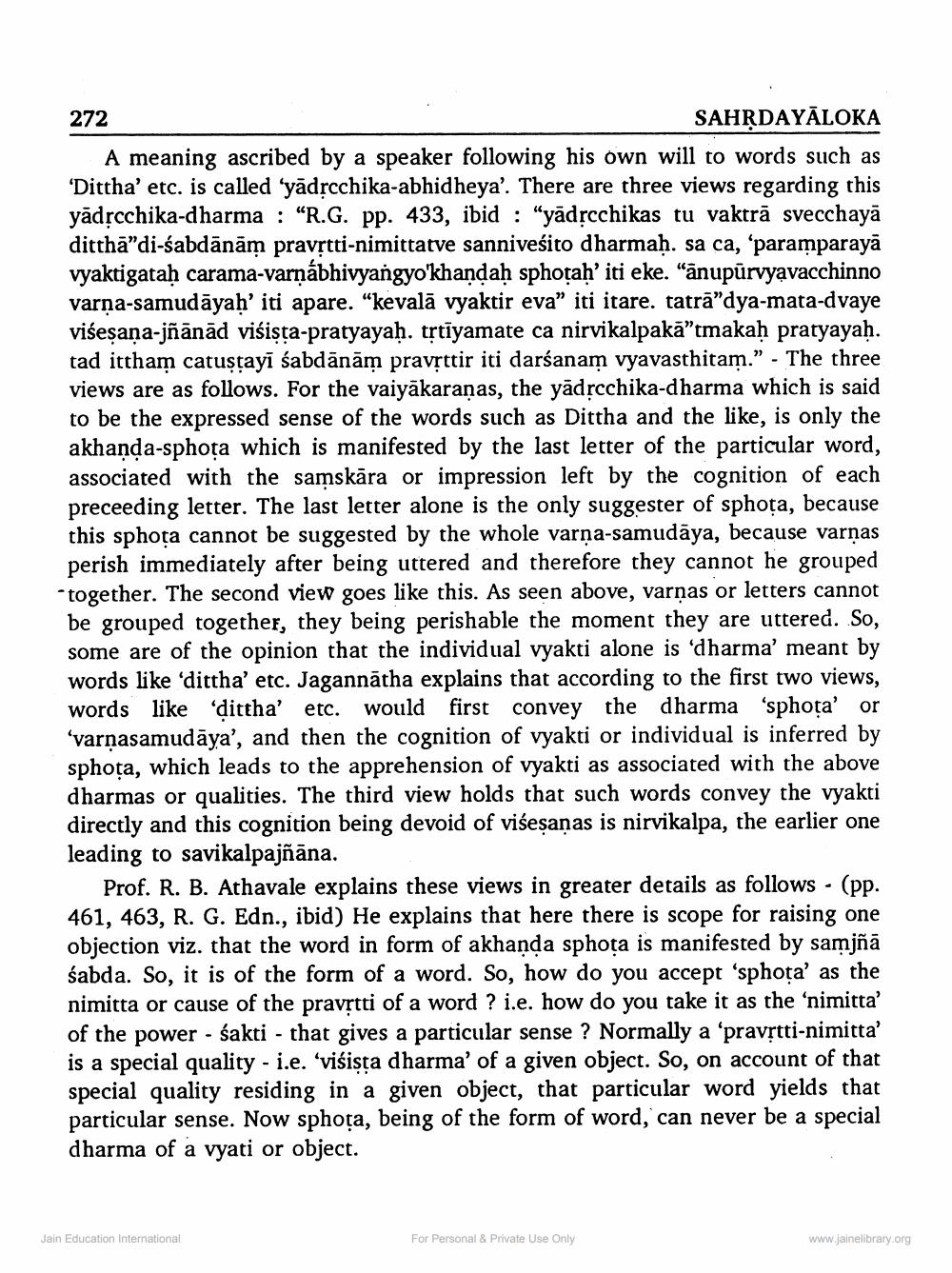________________
272
SAHRDAYĀLOKA A meaning ascribed by a speaker following his own will to words such as 'Dittha' etc. is called 'yādrcchika-abhidheya'. There are three views regarding this yādịcchika-dharma : "R.G. pp. 433, ibid : "yādịcchikas tu vaktrā svecchayā ditthā"di-sabdānām pravrtti-nimittarve sannivesito dharmah. sa ca, 'paramparayā vyaktigatah carama-varņábhivyangyo'khandaḥ sphoțah' iti eke. "ānupūrvyavacchinno varna-samudāyah' iti apare. “kevalā vyaktir eva” iti itare. tatrā”dya-mata-dvaye viśesana-jñānād visista-pratyayaḥ. třtīyamate ca nirvikalpakā”tmakaḥ pratyayah. tad ittham catuṣtayī śabdānām pravșttir iti darśanam vyavasthitam.” - The three views are as follows. For the vaiyākaranas, the yādịcchika-dharma which is said to be the expressed sense of the words such as Dittha and the like, is only the akhanda-sphota which is manifested by the last letter of the particular word, associated with the samskāra or impression left by the cognition of each preceeding letter. The last letter alone is the only suggester of sphota, because this sphoța cannot be suggested by the whole varņa-samudāya, because varnas perish immediately after being uttered and therefore they cannot he grouped together. The second view goes like this. As seen above, varnas or letters cannot be grouped together, they being perishable the moment they are uttered. So, some are of the opinion that the individual vyakti alone is dharma' meant by words like 'dittha' etc. Jagannātha explains that according to the first two views, words like "dittha' etc. would first convey the dharma 'sphoța' or 'varnasamudāya', and then the cognition of vyakti or individual is inferred by sphota, which leads to the apprehension of vyakti as associated with the above dharmas or qualities. The third view holds that such words convey the vyakti directly and this cognition being devoid of viśesaņas is nirvikalpa, the earlier one leading to savikalpajñāna.
Prof. R. B. Athavale explains these views in greater details as follows - (pp. 461, 463, R. G. Edn., ibid) He explains that here there is scope for raising one objection viz. that the word in form of akhanda sphota is manifested by samjñā śabda. So, it is of the form of a word. So, how do you accept 'sphoța' as the nimitta or cause of the pravrtti of a word ? i.e. how do you take it as the ‘nimitta' of the power - Śakti - that gives a particular sense ? Normally a 'pravstti-nimitta' is a special quality - i.e. 'visista dharma' of a given object. So, on account of that special quality residing in a given object, that particular word yields that
ense. Now sphota, being of the form of word, can never be a special dharma of a vyati or object.
Jain Education International
For Personal & Private Use Only
www.jainelibrary.org




